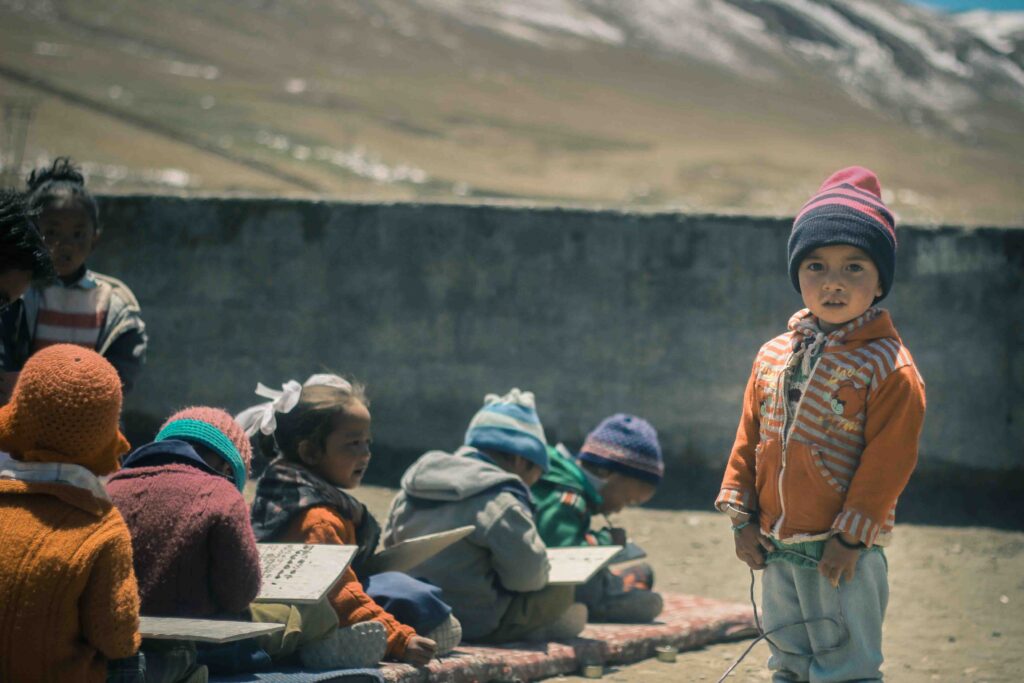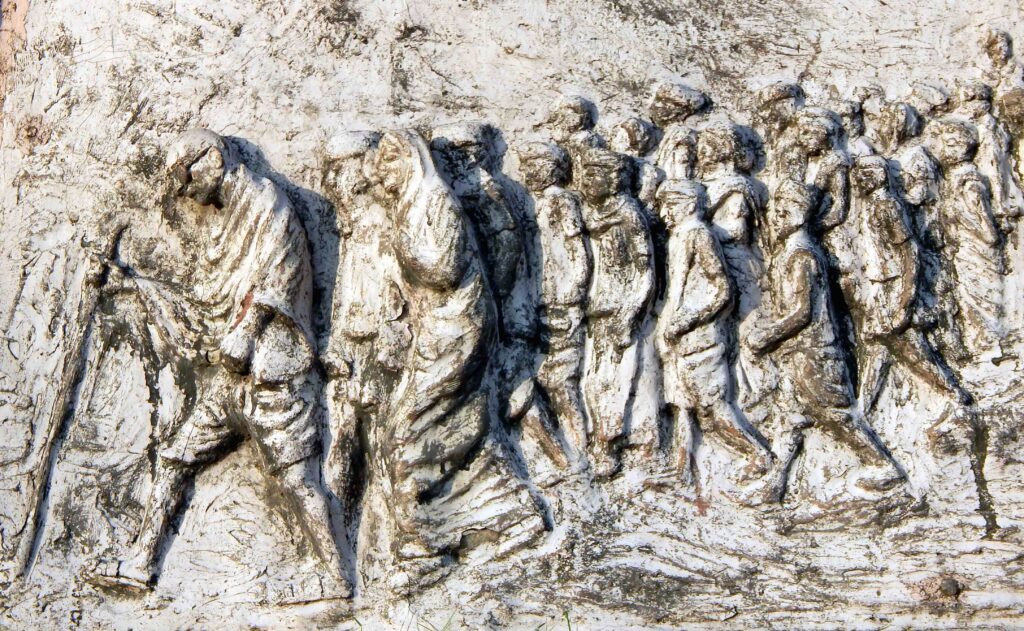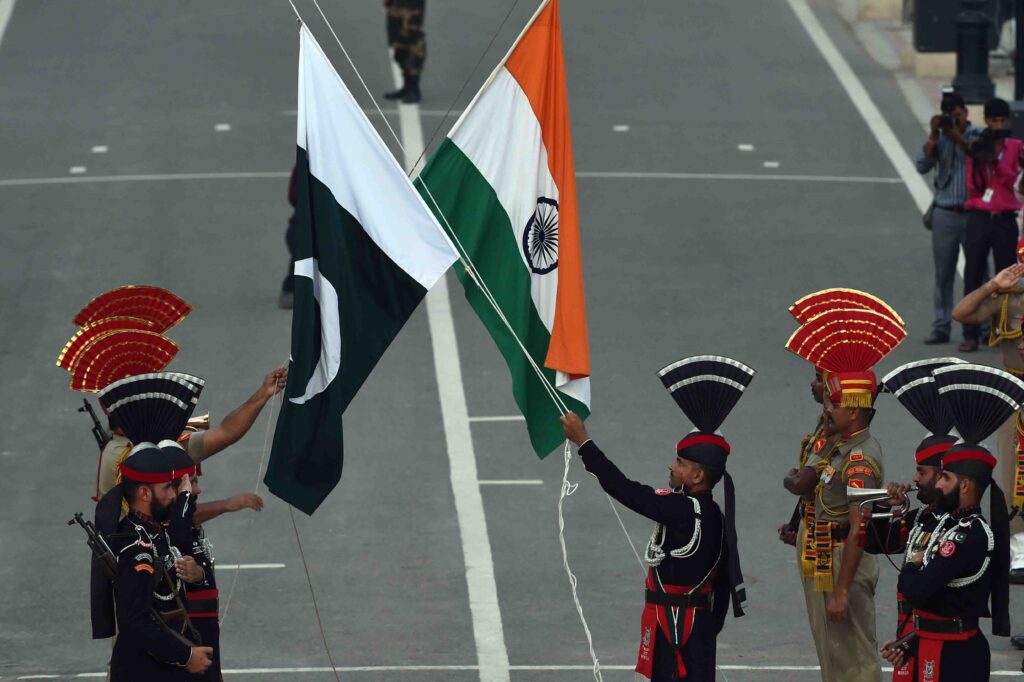A close look at the past politics in Jammu and Kashmir, by the late political correspondent Sati Sahni, gives valuable insight into the state’s turmoil
The Quit Kashmir Movement: 1931 – 1947
The origins of the cultural and religious divide in Jammu & Kashmir can be traced back to the “The Treaty of Amritsar” 1846. This treaty was a very significant milestone in shaping the destiny of the present-day state.
The treaty signed between the British East India Company and the Hindu (Dogra) ruler Raja Gulab Singh after the First Anglo Sikh War, established the princely state of Jammu & Kashmir under the suzerainty of the British. The treaty declared, “The British Government transfers and makes over, forever, in independent possession, to Maharaja Gulab Singh and the heirs male of his body, the Kashmir Valley as well as the area of Gilgit to the north.” This new “princely state” comprised territories which at one point in time had been independent principalities: Jammu, Kashmir, Ladakh, Mirpur, Poonch, Baltistan, Gilgit, Hunza, Muzzaffarabad, Nagar, and some other nondescript kingdoms.

The treaty further stated that the British East India Company Raj would provide aid to the monarch of Kashmir in protecting his territories from disruptive forces. It also mentioned and stated the monarch’s allegiance to the British and as an acknowledgement of that article of the treaty, the primacy of the British East India Company rule, the monarch was required to present annually one horse, twelve shawl goats, and three pairs of impeccably woven Kashmiri shawls. By asserting this clause the colonial authority on the Dogra monarch formed a relationship that would influence politics and religious in the region until the present time.
British moves
The first major “play” by the British came in 1925 when Maharaja Hari Singh was installed as the ruler (Maharaja Pratap Singh had no male heirs and was interested in announcing a distant relative as the successor).
By that time there was a nationalistic and anti-feudal movement in the state and Maharaja Hari Singh squashed it forcefully. The movement actually started due to the difficult and poor conditions the Muslims lived. Having little or no representation in nearly all walks of life led to a lot of discomfort. Even in the state forces of 13 battalions, only one comprised of Muslims. They had severe restrictions on keeping arms and sharp instruments, so much so that it was difficult to get permission to slaughter animals for eating. Land was bestowed to a select few by the monarch and Kashmiri farmers worked on those as mere labourers. Kashmiri Muslims were denied the right to gain an education; excluded from the civil services; disenfranchised; and prevented from participating in political activities without governmental permission. This generated a lot of resentment, and with the winds of change which were in any case blowing across India, could Kashmir be far behind?
Movements begin

In 1939, the All India States People’s Conference (AISPC) took up the case and started a movement to help the plight of the Kashmiris with a representation to the monarch to form an equitable and responsible government. Once the AISPC took this up and adopted the resolution, there was formed a Hindu revivalist party – the Dogra Sabha led by the Pandits and Dogras in Jammu and another movement, Anjuman-i-Nusrat-ul-Islam led by the Mirwaiz of Kashmir. Both movements were keen to improve the living, social and educational reforms for the state subjects. However this was short-lived as the government banned all Muslim organisations. Matters came to a head when there was a major labour shortage at the Kashmir Silk Mill in Srinagar, owned by the Maharaja.
It revealed the terrible conditions that the workforce had to endure; most of the underpaid, overworked, and shabbily treated labourers in the mill were Kashmiri Muslims. In 1924 a delegation of eminent Muslims protested to the Governor General, Lord Reading, by submitting a letter about the despicable conditions and the exploitative practices. Young and educated Muslims formed a reading society – which was known as the “Fateh Kadal Reading Party” and they highlighted the injustice being meted out by way of publications and articles in various newspapers. A very prominent figure of this Reading Room Party was Sheikh Mohammad Abdullah, whose anti-establishment stance and general opposition to the Maharaja made him a popular and well respected figure. He soon organised the All India Kashmir Committee as its leader, and formed a Jammu and a Srinagar representative. This committee was tasked with the following specifically:
1) giving financial support to the political agitators;
2) providing financial assistance to the dependents of incarcerated political leaders, martyrs, and those wounded in confrontations with the police;
3) arranging for medical treatment of the injured;
4) arranging legal defence for political workers;
5) providing legal assistance to the preparation of cases before the Middleton and Glancy Commissions.
Struggle over jobs

Subsequently the Glancy commission advocated that there should be more religious freedom in Kashmir, and emphasised that the government could not exercise its authority at places of worship. More importantly it also mandated that education should be open to all and more schools should be opened. More Muslim teachers needed to be appointed, and a special office for the administration of educational institutions for Muslims should be established.
Above all they recommended that jobs should be open to all members of society. Obviously all this was not liked in the Dogra Durbar and there was a struggle between the Mirwaiz of Kashmir (the titular head of the Muslims) and the young Sheikh Abdullah who was now seen as the leader of the oppressed Muslim masses. Sheikh Abdullah soon formed the Muslim Conference but until and unless it had any sort of power they could not do anything.
Civil disobedience

Unfortunately the Maharaja was not willing to establish any form of democratic governance, and in 1933-34 civil disobedience led to the first democratic election in the valley. Over the next few years, the political ideology of the Muslim Conference greatly brought about pride in regional identity. Abdullah was able to get together an efficient organisation of young like-minded people committed to the party’s ideology, whose emphasis was portraying a Muslim identity, which promised social and political enfranchisement. In the first election they won 14 out of 21 seats allotted to Muslim voters in the State Assembly. This branch of the government had only consultative and no legislative powers.
Over the next few years Sheikh Abdullah tried to form a secular fabric in the society and started a movement also. In 1938 the Muslim Conference was replaced with a more secular outfit – All Jammu & Kashmir National Congress, again headed by Sheikh Abdullah. The idea was to align with the Indian National Congress at the National level, thereby becoming a mainstream party. The espoused cause of it being left of centre Socialist pitted it against the Dogra Durbar, and helped it to form a distinct Kashmiri identity. This very timely move brought the Hindus and Muslims together and with this new-found confidence and backing, the Sheikh and his political organisation demanded that the Treaty of Amritsar be revoked and monarchical rule ousted. Thus was formed the Quit Kashmir movement, aligned to the larger Indian struggle for independence. Unfortunately, this did not work out to the expectations of the leadership as the Hindus and Sikhs of the state, who were the major beneficiaries of the state largesse which they would lose, opposed the movement.
Sedition charges
In May 1946 the Sheikh was sentenced to nine years in prison on charges of sedition for having led the Quit Kashmir movement against the Maharaja’s regime. Sheikh Abdullah’s trial started at the Badami Bagh cantonment. Pt Nehru constituted a committee of defence headed by himself for the Sheikh’s trial. The committee included renowned people like Bhulabhai Desai and Asaf Ali. While Pt Nehru was on the way to Kashmir he was arrested and later sent back. During his trial he gave his reasons for this movement and had said:
Where law is not based on the will of the people, it can lead to the suppression of their aspirations. Such law has no moral validity even though it may be enforced for a while. There is a law higher than that, the law that represents the people’s will and secures their well-being; and there is the tribute of the human conscience, which judges the ruler and the ruled alike by standards that do not change by the arbitrary will of the most powerful. To this law I gladly submit and that tribunal I shall face with confidence and without fear, leaving it to history and posterity to pronounce their verdict on the claims that I and my colleagues have made not merely on behalf of the four million people of Jammu and Kashmir but also of the ninety-three million people of all the States of India [under princely rule]. This claim has not been confined to a particular race or religion or colour…I hold that sovereignty resides in the people, all relationships political, social and economic, derive authority from the collective will of the people.

Unfortunate for Abdullah, despite a lot of support from the Congress, the movement was crushed politically and militarily. It is reported that in 1946 Sheikh Abdullah sent a telegram informing the British Cabinet about the ground situation and the Amritsar Agreement had outlived its life. A severely fragmented Kashmiri National Congress was at the mercy of the Maharaja’s severely divisive policies and wanted to further divide the state’s religious ethnicity. They introduced the two scripts – Devnagri and Persian – which further drove in the wedge. An irreplaceable rift between the Hindus and Muslims was being created – obviously a short-sighted policy.
Religious divide
On the national scene, Mohammad Ali Jinnah was pushing and insisting with Abdullah to extend his support to the Muslim League – the organisation that was at the forefront of the creation of Pakistan. Sheikh Abdullah was averse to a religious divide as it was against his very principle. The Indian National Congress, which had supported the Quit Kashmir movement, backed the Sheikh’s call for a plebiscite on the creation of two countries. The Congress advised the Maharaja, right up to 1947, to gauge the public mood before taking any call on the future of the state. On the very eve of Partition the Maharaja was busy trying to hold onto power as the state itself was very fragmented. Jawaharlal Nehru was vocal about retaining Kashmir in India to validate the secular credentials; Jinnah never once publicly asked Kashmiris to align with Pakistan till as late as 25th July ‘47.
Maharaja Hari Singh was indecisive and some say that he was keen on remaining independent of the two countries. One wonders how he wanted to sustain this notion, especially as his political and military play was very limited. It seems that the Maharaja had almost made up his mind not to become part of either of the Dominions. There were some reasons for this. Firstly, it was the statement of Muslim League that the ruler was the ultimate authority to decide the issue of accession. Secondly, he feared that the Muslim majority state would not willingly support him if he decided to accede to India. Lastly, he did not want to accede to Pakistan for obvious reasons.
Two other major influences working on him were – Prime Minister RC Kak, who reportedly advised him to delay decision to accede till after the two Dominions had been created, and the second influence was Maharani Tara Devi. The Indian Government opposed this stance whereas the Pakistanis supported it as they had nefarious designs. Lord Mountbatten also visited Kashmir in June ‘47 to talk to the Maharaja about the decision to align with one of the two countries but the Maharaja refused to meet him. History bears witness to the events that treacherous Pakistan brought upon Kashmir and ultimately the Maharaja had no option but to accede to India on Oct 26, 1947.
Ringside Seat
I was involved in the movement, being a student in Kashmir at that time. Apart from being involved in student politics, I too was part of a small group which was debating the Naya Kashmir manifesto to be unfolded after the Quit Kashmir movement. The Indo-Soviet Friendship Society was formed at the end of 1941 / beginning of 1942. A branch started in J&K also. It was a non-political body. I was its General Secretary for 18 months. Its task was to create public awareness among the people on the issue of Imperialist war vs Peoples’ War. Meanwhile Churchill’s War Council of the British Empire had included Maharaja Hari Singh as a member. For me the situation was problematic. I was involved with the anti-war effort because of my association with NC, AISF and Indo-Soviet Friendship Society. On the other hand my father was a Darbari (courtier). My mother was part of the Maharani’s Ladies Club, meant to boost the war effort. I was closely associated with NC leaders like Sheikh Sahib, Bakshi Gh Mohd. Someshwar, KN Bamzai, JN Zutshi, DP Dhar and Mr Sadiq.

A very important event was the visit of Mr Jinnah to Kashmir in 1944. Jinnah main reason to travel to Kashmir was to win over Sheikh Abdullah but the latter did not bite the bait. Sheikh Sahib told Jinnah plainly that he would not allow his party to go with the Muslim League at any cost. I had a rare chance to meet with Mr Jinnah and get his views generally on Indian and state politics. I observed that he was quite disappointed with the reaction he received from all walks of society in Kashmir and not just Sheikh Abdullah.
Within the National Conference there was polarisation along “pro-Maharaja” and “anti-Maharaja” lines. Jinnah’s unsuccessful visit had acted as fuel to this polarisation. In a session of NC in Jammu Province it was decided that “We have reached limit of our patience and need to start agitation against the Maharaja”. The NC leadership had also in mind the Quit India Movement which had yielded big dividends to Congress. So they thought they could replicate it in Kashmir by launching the Quit Kashmir Movement. They forgot that people had made big sacrifices in the Quit India Movement. There were few such people in Kashmir. Many people wanted to use movement for personal aggrandisement and personal gains. This was the main reason for the failure of the Quit Kashmir Movement.




A good write up. Helped to understand Kashmir problem. Thank U.
Extremely well written!
Supper traitor explioter apportunist a tall Evils planing self egoistic symbi qont did mistakes with delibracy quit Kashmir movement was buried tactfully for personal gains and power and
Superb !
Kashmir gratlake tricking sonamarg to naranage
Quite informative and gives the genesis of the Present J&K’s problem.
who was asked to quit kashmir and by whom …please ponder on it….
A good and knowledgeable right up.
good Narration of untold history !!Congrats !!
Very informative !
Once it is a state ,it is a state of india. Appeasement of stupids and fools is the root cause of destruction.
Real n brief description of Kashmir issue. Many many thanks for this.
Very much informative.one and all should go through.
Kashmir issue a Political Sellout!.?.
Myarajja Ranjit singh is Real owners
Better not to engage intellectuals in the useless debates to divert attention from basic problem which has left Jammu and kashmir in quite terrible and awkward situation at the moment.
Quiet kashmir movement failed because of traitor shiekh Abdullah
Nothing fails, its repercussions r felt now.
It is matter of time to make it meet its logical end
Not only Muslims but Pandit children were also studying in those Gabri schools. Cause of the failure ofQuite kashmir movement was due to the wedge created on one or the other pretext by various vested interests in the movememt. Discussion on it shall entail nothing in the present scenario. Much water has flown in the river jhelum from that time. Better to explore possibilities for the upliftment of the masses viz. Socio economic
History cannot be distorted.All along muslims were under oppression under the rule of maharaja. But they did not heed to Zinna. The accession by the king Raja Hari singh was forced on kashmir in october two months after indian independence. Then Hari singh now BJP oppress the muslims.
BJP brand NC PDP CPIM Congress and two other parties as MAFIA GROUP in a message yesterday. Who ever speak in support of democracy people rights are branded as agents of PAkistan , anti nationals.
Muslims were not interested in education,so jabri schools were established for them. In jabri schools children were admitted forcibly.
Tell the KASHMIRI JIHADIS ;
This should be our message to terrorists in India ;
Forwarded as received
Quote:
‘INVADERS PROGENY, CONVERTS AND COLLABORATORS, NOT DHARMIC INDIANS, MUST ADAPT… Take It Or Leave It.
Let the facts be straight. Invaders came to loot India and plundered this land. They never ruled whole India as Brainwased people believe.
Uptill1565, Vijaynagar Empire ruled entire south and central India till it’s tragic destruction by treachery.
Sikhs started resisting invaders by this time and went on gaining strength continuously till the pinnacle in the form of Ranjit Singh Empire.
Just before 1645, Shivaji founded his Maratha Empire which kept on defeating Mughals in war after war till the final subjugation of Delhi by Marathas in 1755. Marathas ruled most of India till their defeat in 1818 by British. Mughal Badshah needed to take permission of Maratha Governor GangadharRao to venture beyond a minuscule area of SHAH ALAM TO PALAM in Delhi and was forced to pay CHOUTH tax.
Sikhs defeated Mughals repeatedly and ruled till Kabul.
Hence get rid of the notion of 800 years invaders rule.
We are tired of this nation worrying about whether we are offending some individual or their culture. Since the terrorist attacks, we have experienced a surge in patriotism by the majority of Indians.
‘This culture has been developed over atleast twenty centuries of struggles, trials and victories by millions of men and women who have sought freedom.
‘We speak Many languages and encourage multiple BELEIEF SYSTEMS to search and realise the TRUTH or REALITY or GOD or CREATOR or whatever you want to name the indefinable reality.
We never liked imprisonment of RIGID OSSIFIED IRON CLAD DOGMATIC UNQUESTIONABLE BELEIF SYSTEMS of 1 BOOK BELEIF SYSTEMS FOLLOWERS.
‘Most Indians believe in a Creator, but accommodate and allow atheism as part of DHARMA. This is not some DHARMIC, right wing, political push, but a fact, because DHARMIC men and women, on DHARMIC principles, founded this nation, and this is clearly documented. It is certainly appropriate to display it on the walls of our schools.
If DHARMA offends you, then I suggest you consider another part of the world as your new home, because DHARMA is part of our culture.’
DHARMA is eternal principles, eternal righteousness (सनातन) and keeps on evolving as truth cannot be imprisoned in 1 BOOK or 1 MESSAGE or 1MESSANGER.
Because of your inability to fathom this extreme fluidity, vast Ness, absolute freedom to choose, relate and worship the indefinable reality called GOD and incorporation of contrary principles coexisting harmoniously in DHARMA, you people abuse us as KAFIRS, SATAN WORSHIPPERS, PAGANS and what not.
But all these years we tolerated your abuses, insults, aggressions, Violence, treacherous Conversions as a highly educated and accomplished professor of DIVINITY tolerates peacefully abuses of an illiterate and obnoxious child.
However there is a limit to tolerate Violence, persecution, abuses and treacherous Conversions by peaceful nonviolent DHARMIC CIVILIZATION.
You have perceived our nonviolence as cowardice and slowly the DHARMIC people are awakening to this continuous PERSECUTION, Violence and forced Conversions not only in India but Pakistan and Bangladesh and hence we have passed CAA to give an escape route from hell to persecuted people.
‘We will accept your beliefs, and will not question why. All we ask is that you accept ours, and live in harmony and peaceful enjoyment with us.
‘This is OUR COUNTRY, OUR LAND, and OUR LIFESTYLE, and we will allow you every opportunity to enjoy all this. But once you are done complaining, whining, and griping about Our Flag, Our Pledge, Our HINDU beliefs, or Our Way of Life, I highly encourage you take advantage of one other great Indian freedom, ‘THE RIGHT TO LEAVE’.
‘If you aren’t happy here then LEAVE’. We didn’t force you to come here. You asked to be here. So accept the country that accepted you.
Comments are closed.